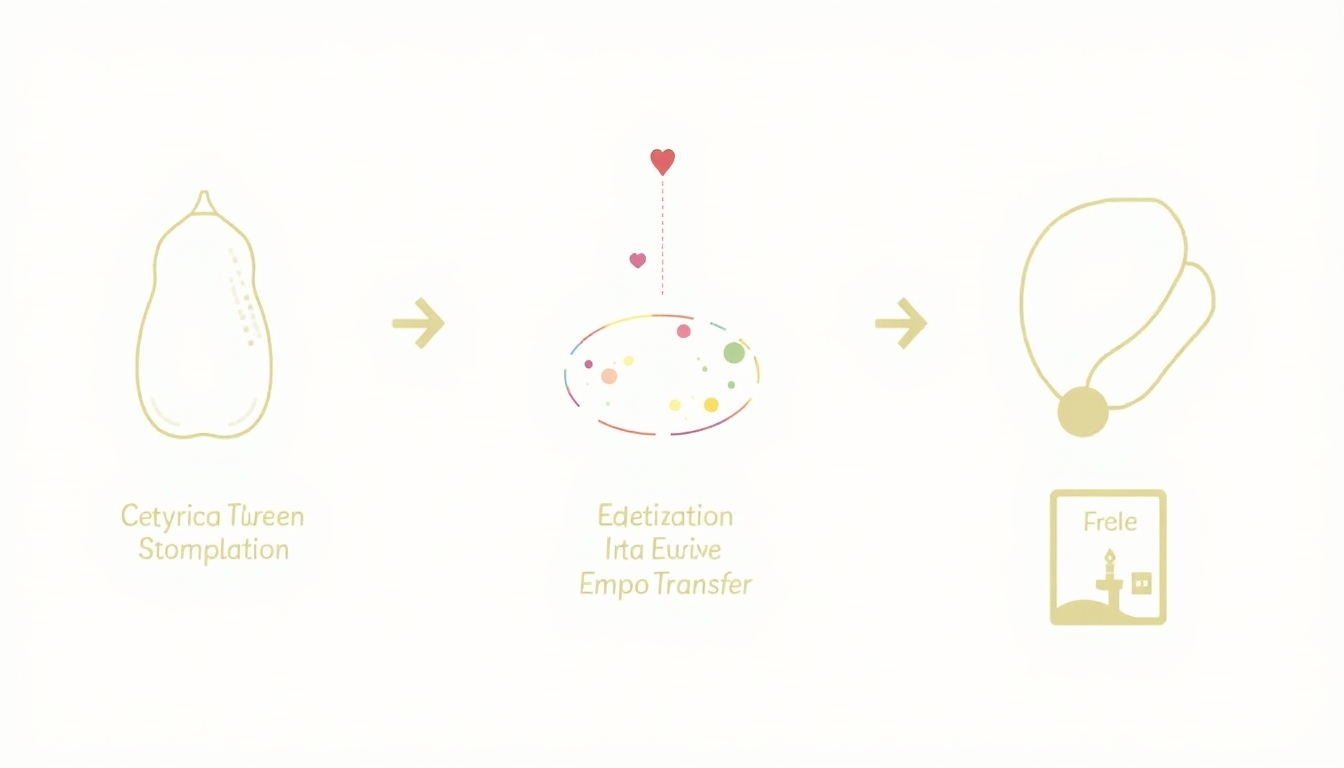The Science Behind In Vitro Fertilization: A Comprehensive Guide
March 5, 2025, 7:22 a.m.
In Vitro Fertilization (IVF) is a revolutionary fertility treatment that helps millions of couples overcome infertility. It involves fertilizing eggs outside the body and placing the embryos into the uterus. For many, IVF offers hope when natural conception isn’t possible.

What Is IVF and How Does It Work?
IVF is a multi-step process designed to assist with conception. It starts with ovarian stimulation, where medications encourage the ovaries to produce multiple eggs. This step boosts the odds of creating healthy embryos.
Next, doctors retrieve the mature eggs from the ovaries using a small procedure. Sperm then fertilizes the eggs in a lab. After a few days, the strongest embryos are transferred to the uterus, hoping they’ll implant and grow.

The Role of Ovarian Stimulation
Ovarian stimulation is key to IVF success. Normally, a woman produces one egg per cycle. Fertility drugs change that, prompting the ovaries to release several eggs at once. Doctors monitor this closely with ultrasounds and blood tests.
This process isn’t one-size-fits-all. For example, women with Polycystic Ovary Syndrome (PCOS) often struggle with ovulation, a major cause of infertility. Ovarian stimulation and PCOS go hand in hand in IVF, helping these women produce eggs when their bodies won’t naturally.

Egg Retrieval and Fertilization
Once the eggs are ready, retrieval happens. A thin needle, guided by ultrasound, collects them from the ovaries. It’s quick—about 20 minutes—and done under sedation. The eggs then meet sperm in the lab for fertilization.
Fertilization can happen two ways: sperm is mixed with eggs in a dish, or a single sperm is injected into an egg (called ICSI). After a few days, embryos start forming. The best ones are chosen for transfer.

Embryo Transfer and Beyond
Embryo transfer is a gentle step. A thin tube places the embryos into the uterus—no anesthesia needed. If all goes well, an embryo implants, and pregnancy begins. A test confirms it about two weeks later.
The science behind In Vitro Fertilization blends precision and patience. Each step builds on the last, aiming for that moment of success. But it’s not just science—it’s deeply personal too.
The Emotional Side of IVF
IVF isn’t just about needles and labs. It’s an emotional ride. Couples feel hope one day, worry the next. I’ve seen friends go through it—the waiting, the setbacks, the quiet strength they find.
One friend told me, 'You’re excited, then terrified, all at once.' That’s real. The process tests your resilience, but the payoff—a baby—makes every tough day worth it.

Tips for Navigating IVF
If you’re considering this fertility treatment, preparation helps. Here’s what you can do:
- Learn the basics: Understand each step of IVF so you know what’s coming.
- Pick a great clinic: Find a team you trust with a solid success rate.
- Stay healthy: Eat well, rest, and manage stress—it matters.
- Lean on others: Talk to loved ones or join a support group.
These steps won’t erase the challenges, but they’ll give you strength. IVF demands a lot, physically and emotionally. Having a plan keeps you grounded.

Why IVF Matters
The science behind In Vitro Fertilization has changed lives. It tackles infertility head-on, offering solutions where none existed before. For couples with blocked tubes, low sperm counts, or conditions like PCOS, it’s a lifeline.
Success isn’t guaranteed—rates vary by age and health. But even with odds like 30-40% per cycle for younger women, IVF’s impact is huge. It’s hope in action.
Wrapping Up
IVF combines cutting-edge science with human dreams. From ovarian stimulation to embryo transfer, it’s a carefully crafted process. For those facing infertility, it’s more than a treatment—it’s a chance at a family. The road’s tough, but the destination is worth it.